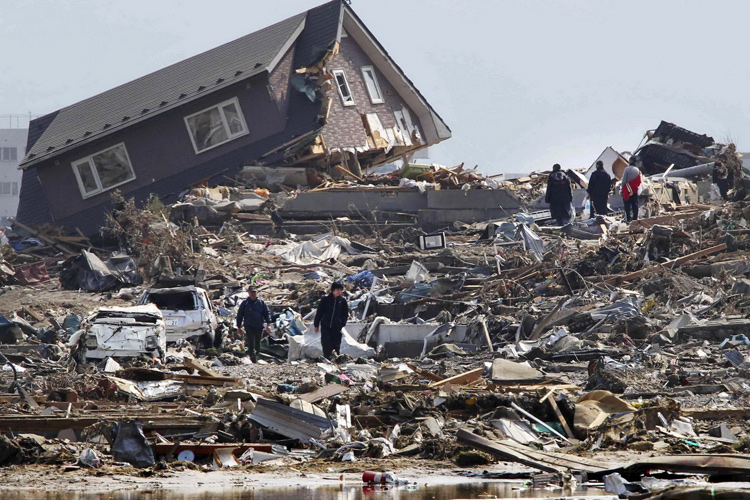Earthquakes are the deadliest and most damaging natural disasters in the world. But why do they happen, and what caused the planet to shake violently?
Earthquakes - also called temblors by scientists - are a relatively continuous phenomenon.
Most of them can only be detected by seismographs, an extremely sensitive instrument used to identify, measure, and record earthquake waves.
Small tremors can be felt by people, but they don't often cause major catastrophes.
The general rule of thumb is that at least once a year, a great earthquake takes place somewhere in the world.
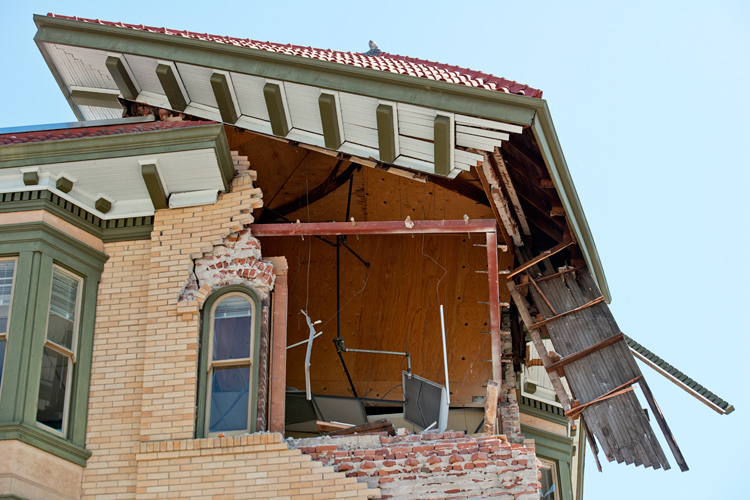
Why Do Earthquakes Happen?
The surface of the Earth, a thin crust on the outside of our planet, is made up of 15 major tectonic plates (see map below) that are constantly moving and interacting in different ways.
They fit together like a grand jigsaw puzzle - some parts are made up of continents and other parts of oceans.
An earthquake is the sudden shaking of the Earth's surface caused by movements and collisions of large masses of rock.
The release of energy in the Earth's crust and upper mantle causes shock waves - scientifically named seismic waves - that might produce changes in the surface and open giant cracks in the ground.
In a large earthquake, people living thousands of miles or kilometers away from the epicenter may feel a shock wave.
The area where tectonic plates meet is called a plate boundary.
Plate boundaries are places of intense fracturing, and the plates in these zones are riddled with cracks called geologic fault lines.
These faults are nothing but large fractures in the rocks of Earth's crust.
In some cases, plates drift away from each other, causing them to crack and break.
When the plates get too thin, lava erupts at the surface and creates a new oceanic crust in a process known as rifting.
In other places, plates collide together.
When the oceanic crust is pushed against another plate, the oceanic plate will slip under the other plate and be absorbed into the Earth's mantle - this is called subduction.
Continental plates are thicker and more buoyant, so they can't slip under one another.
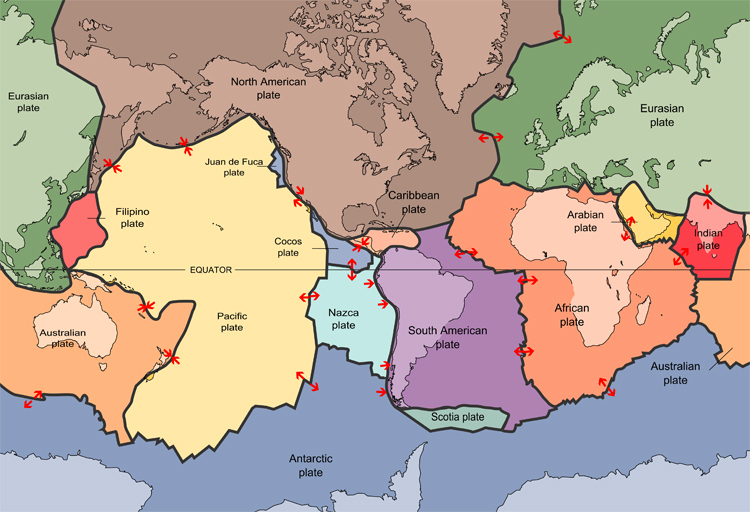
When these meet, they get pushed upwards and form mountains. This is how the Himalayas were created.
But some plates simply slide past each other - this is called a conservative plate boundary.
Tectonic plates move on average at the rate of around four centimeters per year - that's about as fast as your fingernails grow.
The immense size and weight of tectonic plates cause high friction when they rub against each other.
For many years, the friction is so high the slabs of rock separated by fault lines cannot move, and they are stuck.
Because tectonic plates are moving, pressure builds until, eventually, the friction between the rock slabs is overcome, and they move in a sudden, violent motion.
The magnitude of an earthquake depends on the size of the fault and how far the slabs of rock move when it finally goes.
In the largest earthquakes, the slabs of rock at the fault line may move as much as tens of meters in seconds.
The strongest and most destructive earthquakes occur at subduction plate boundaries and are associated with ruptures of the faults.
The tectonic plates move up and down, vertically and horizontally, slipping and sliding along the fracture in the rock in opposite directions.
The displacement of the ground on the Earth's surface varies from a few inches to many feet.
The worst and most deadly earthquakes are associated with abrupt changes in the shape of Earth's outermost shell, particularly the crust.
There is also a small proportion of earthquakes caused by human activity.
Atomic explosions, the pressure made from holding large amounts of water in reservoirs behind dams, the injection of liquid waste deep into the ground, and the use of dynamite could trigger minor earthquakes.
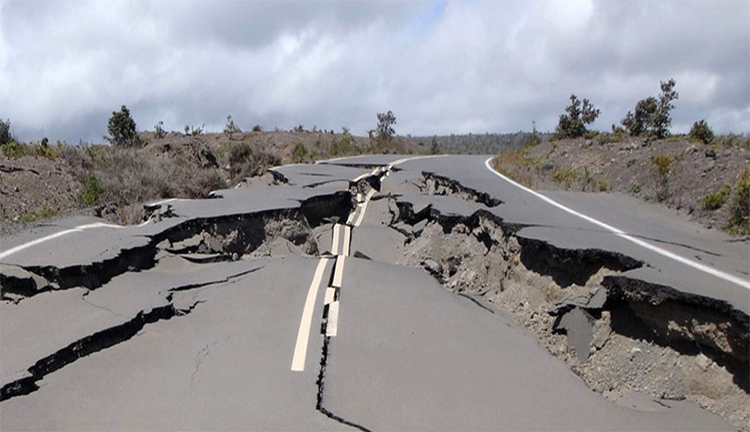
Effects and Consequences of Earthquakes
Earthquakes kill, on average, about 10,000 people each year.
Scientists estimate that every year, there are 500,000 detectable tremors, of which 100,000 can be felt by humans, and around 100 cause damage and destruction.
Architects and engineers are already designing buildings with more robust structures capable of withstanding the most powerful earthquakes.
The oldest report of an earthquake comes from one of China's earliest ruling dynasties - the Shang Dynasty (1600-1046 B.C.).
A massive tremor can have a dramatic impact on the Earth's surface, as it might produce landslides, mudflows, and relevant changes in the flow of groundwater.
An earthquake can destroy or severely damage residential and commercial buildings, dams, bridges, pipelines, embankments, railways, and many other human-made structures and landmarks.
Earthquakes can lead to devastating and uncontrolled fires.
Additionally, the violent shaking of the seafloor can generate tsunamis.
These brutal swells travel as fast as 500 miles per hour (804.6 kilometers per hour) and spread over the oceans in ever-widening circles.
Tsunami waves reach the coastline with heights of 100 feet (30.4 meters) but, most importantly, with tremendous energy and power.
In less than a couple of minutes, they can wipe out entire coastal communities.
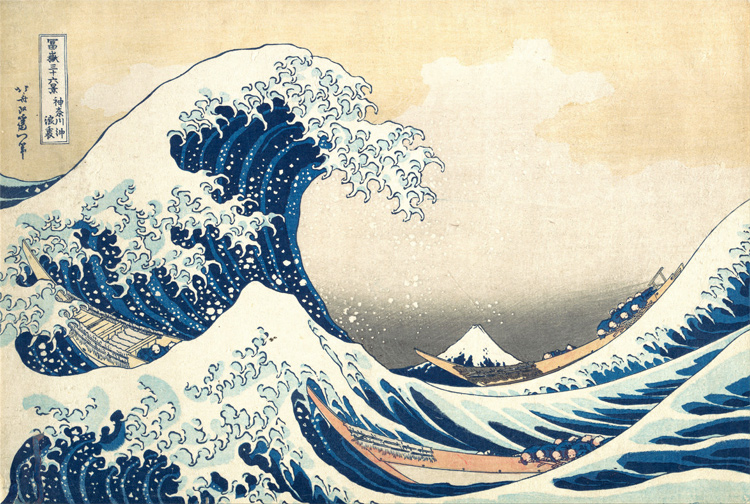
Where Do Most Earthquakes Occur?
Most Earth tremors take place on one of two great seismic belts that encircle the planet.
These earthquake belts coincide with recently formed mountain ranges and volcanic activity regions.
According to scientists and seismologists, 80 percent of the energy released in earthquakes originates in the Circum-Pacific Belt.
The Circum-Pacific Belt, commonly known as the Ring of Fire, circles the Pacific Ocean along the west coasts of North and South America and runs through the Asian islands region (East Indies).
There's also a less active belt that passes between Europe and North Africa through the Mediterranean region and then runs eastward through Asia before joining the Ring of Fire.
This seismic belt is responsible for 15 percent of the energy released in earthquakes around the world.
But there are also other very active seismic activity regions, especially those located in the Arctic Ocean, the Atlantic Ocean, and the western Indian Ocean, along East Africa's Great Rift Valley of East Africa.
The point of origin of an earthquake might occur close to the Earth's surface but also down to a maximum depth of 430 miles (692 kilometers).
However, 75 percent of the seismic energy produced per year is released by shallow-focus earthquakes originating about 40 miles (64.3 kilometers) deep.
The epicenter of an earthquake is the exact location on the Earth's crust directly above the focus or point of origin.
Intermediate earthquakes - tremors with a focal depth ranging from about 40 to 200 miles (64.3-482.8 kilometers) deep - account for 12 percent of the total energy each year.
Last but not least, deeper earthquakes are responsible for three percent of the total energy released.
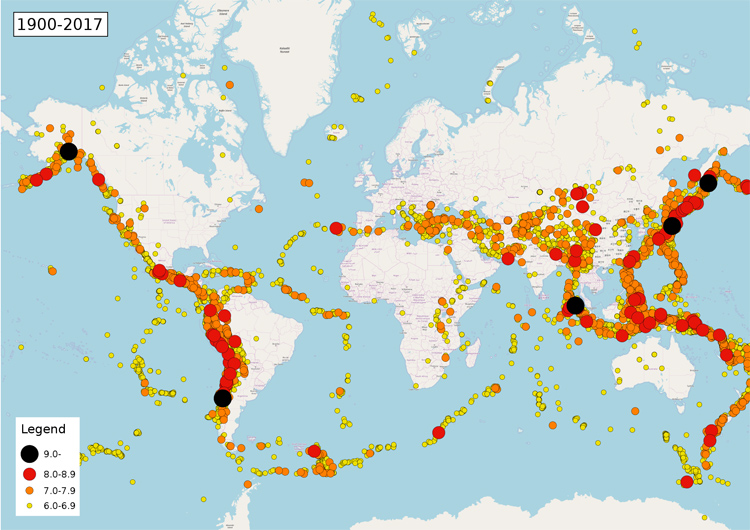
How Are Earthquakes Measured?
Seismology, the science that studies the Earth's earthquakes and seismic waves, is a relatively new discipline that only gained public exposure in the 20th century.
Seismic activity can be detected, measured, and compared thanks to an instrument called a seismograph.
The first seismometer was developed during the 2nd century in China, and the first similar Western device only saw the light of day in 1703.
The seismograph is equipped with electromagnetic sensors that process and record the pattern of shock waves caused by an earthquake.
The result of its analysis - the seismogram - is highly visual and easy to interpret, allowing scientists to inform the authorities and the population but also to make further conclusions.
Modern seismographs use a pendulum that moves and records the motion whenever the ground moves. They can detect shock waves on the other side of the world.
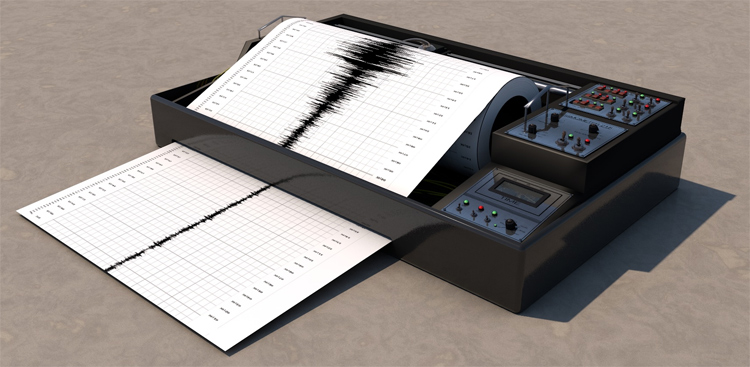
Earthquake Magnitudes: The Richter Scale and the Modified Mercalli Intensity Scale
There are two primary formulas used to measure the strength of an earthquake: the Richter scale and the Mercalli scale.
The Richter scale runs from 0 to 10, with 10 being the strongest possible earthquake. It is most common in the United States.
This earthquake magnitude scale was developed by Charles F. Richter in 1935 and is based on the amount of energy released by rock movements.
The smallest earthquake that can be felt by people without instruments is magnitude 2.
An increase of one magnitude step is equivalent to an increase of 30 times the amount of energy released as shock waves.
For example, the Great 1964 Alaska earthquake had a magnitude of 8.6.
As a result, the energy released was not twice as large but instead more than 800,000 times higher than a tremor of magnitude 4.3.
The Modified Mercalli Intensity (MMI) Scale was initially developed by Giuseppe Mercalli in 1902 and later fine-tuned by Frank Neumann and Harry O. Wood in 1931.
The MMI scale is used worldwide and features 12 levels of earthquake strength.
It was designed to indicate the observed structural damages felt by people. The higher the level, the higher the amount of destruction.
Can Earthquakes Be Predicted?
The truth is that it is hard to predict earthquakes.
Scientists have been trying to correlate data in order to forecast seismic activity, but the results are still far from accurate.
Modern probabilistic seismic hazard estimates are based on earthquake observatories, patterns and trends, and statistics.
Seismologists also study gaps in the seismic record of a region and areas where displacements have not taken place for a long time.
Physical changes in the environment, like crustal deformation in fault zones, the occurrence of dilatancy, and the rise in radon concentrations in wells, are some of the many complex variables that could be added to the earthquake forecasting equation.
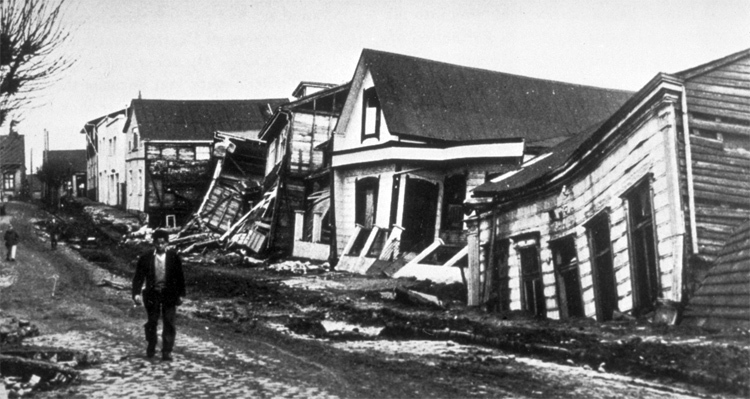
The Largest Earthquakes in History
The first seismographs were built in the early 1900s.
Still, geologists can estimate earthquake magnitudes that occurred since the year 1500 based on historical reports of the severity and extent of the damage.
The largest earthquake ever recorded took place on May 22, 1960, near Lumaco, in Chile.
With a magnitude scale of between 9.4-9.6, it was the most powerful earthquake ever in modern history.
The 1960 Valdivia earthquake (pictured above), also known as the Great Chilean earthquake, triggered several tsunamis that produced waves of more than 80 feet (24.3 meters).
The most affected city - Valdivia - was almost completely destroyed, and many inhabitants left forever.
However, the deadliest recorded earthquake took place in Shaanxi, China, on January 23, 1556. The tremor killed over 820,000 people.
In most recent times, the 2004 Indian Ocean earthquake claimed 227,900 human lives, while the 2010 Haiti earthquake caused between 46,000 and 316,000 deaths.
The largest earthquakes by magnitude ever recorded are as follows:
Rank
1
2
3
4
5
6
7
8
9
10
11
12
13
14
15
16
17
18
19
20
21
22
23
24
25
26
27
28
29
30
31
32
33
34
35
Date and Location
May 22, 1960 | Valdivia, Chile
March 27, 1964 | Prince William Sound, Alaska, United States
December 26, 2004 | Indian Ocean, Sumatra, Indonesia
March 11, 2011 | Pacific Ocean, Tōhoku region, Japan
November 4, 1952 | Kamchatka, Russian SFSR, Soviet Union
August 13, 1868 | Arica, Chile
January 26, 1700 | Pacific Ocean, USA and Canada
April 2, 1762 | Chittagong, Bangladesh
November 25, 1833 | Sumatra, Indonesia
January 31, 1906 | Ecuador – Colombia
February 27, 2010 | Offshore Maule, Chile
August 15, 1950 | Assam, India – Tibet, China
October 28, 1707 | Pacific Ocean, Shikoku region, Japan
July 8, 1730 | Valparaiso, Chile
November 1, 1755 | Atlantic Ocean, Lisbon, Portugal
February 4, 1965 | Rat Islands, Alaska, United States
October 28, 1746 | Lima, Peru
March 28, 1787 | Oaxaca, Mexico
March 9, 1957 | Andreanof Islands, Alaska, United States
March 28, 2005 | Sumatra, Indonesia
April 11, 2012 | Indian Ocean, Sumatra, Indonesia
December 16, 1575 | Valdivia, Chile
November 24, 1604 | Arica, Chile
May 13, 1647 | Santiago, Chile
May 24, 1751 | Concepción, Chile
November 19, 1822 | Valparaíso, Chile
February 20, 1835 | Concepción, Chile
February 16, 1861 | Sumatra, Indonesia
May 9, 1877 | Iquique, Chile (then Peru)
November 10, 1922 | Atacama Region, Argentina
February 1, 1938 | Banda Sea, Indonesia
October 13, 1963 | Kuril Islands, Russia (USSR)
October 20, 1687 | Lima, Peru
October 17, 1737 | Kamchatka, Russia
June 15, 1896 | Pacific Ocean, Tōhoku region, Japan
Magnitude
9.4-9.6
9.2
9.1-9.3
9.1
9.0
8.5-9.0
8.7-9.2
8.8
8.8
8.8
8.8
8.7
8.7-9.3
8.7
8.5-9.0
8.7
8.6
8.6
8.6
8.6
8.6
8.5
8.5
8.5
8.5
8.5
8.5
8.5
8.5
8.5
8.5
8.5
8.5
8.5
8.5
